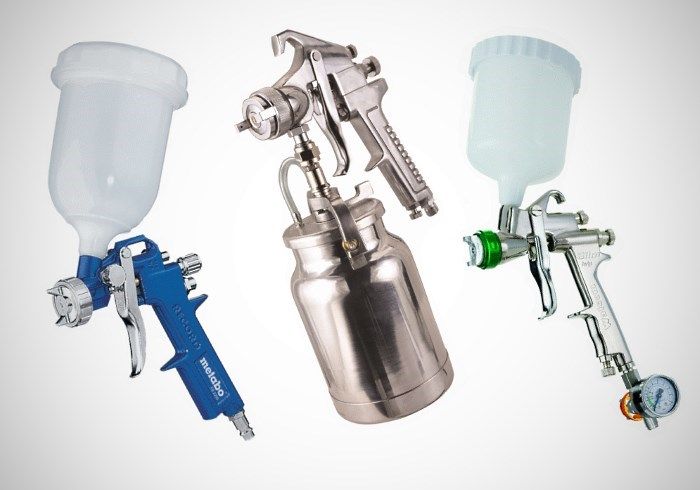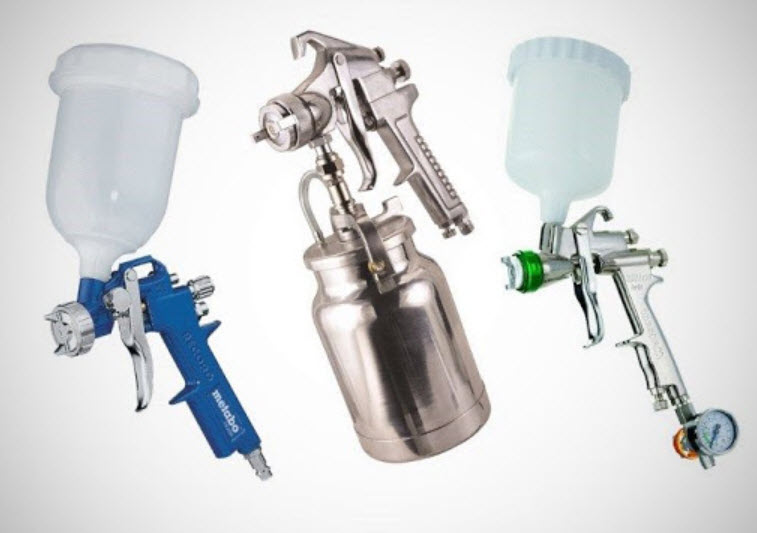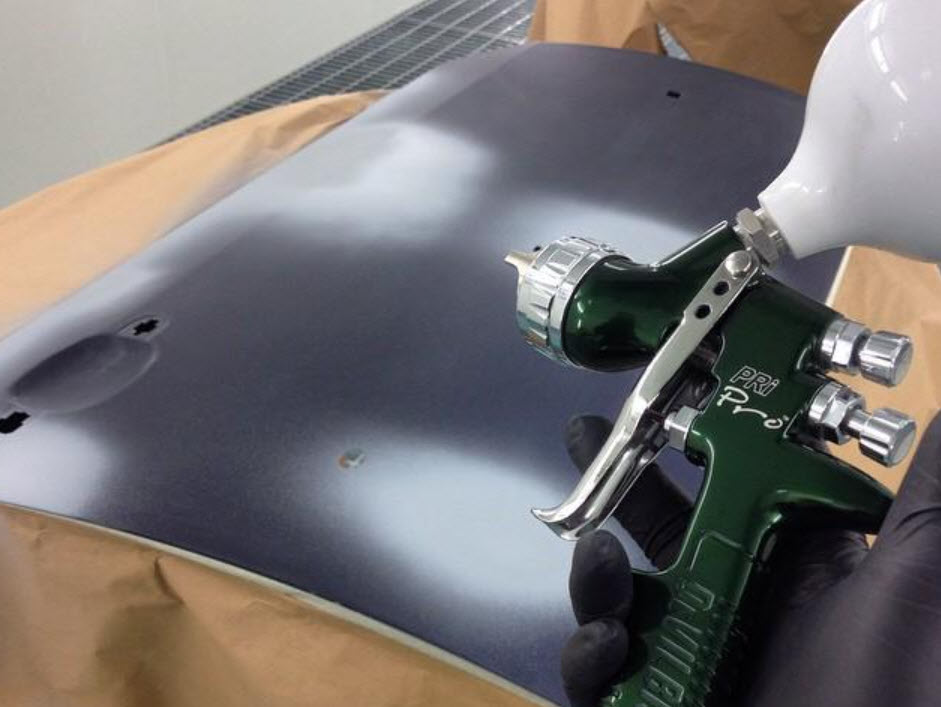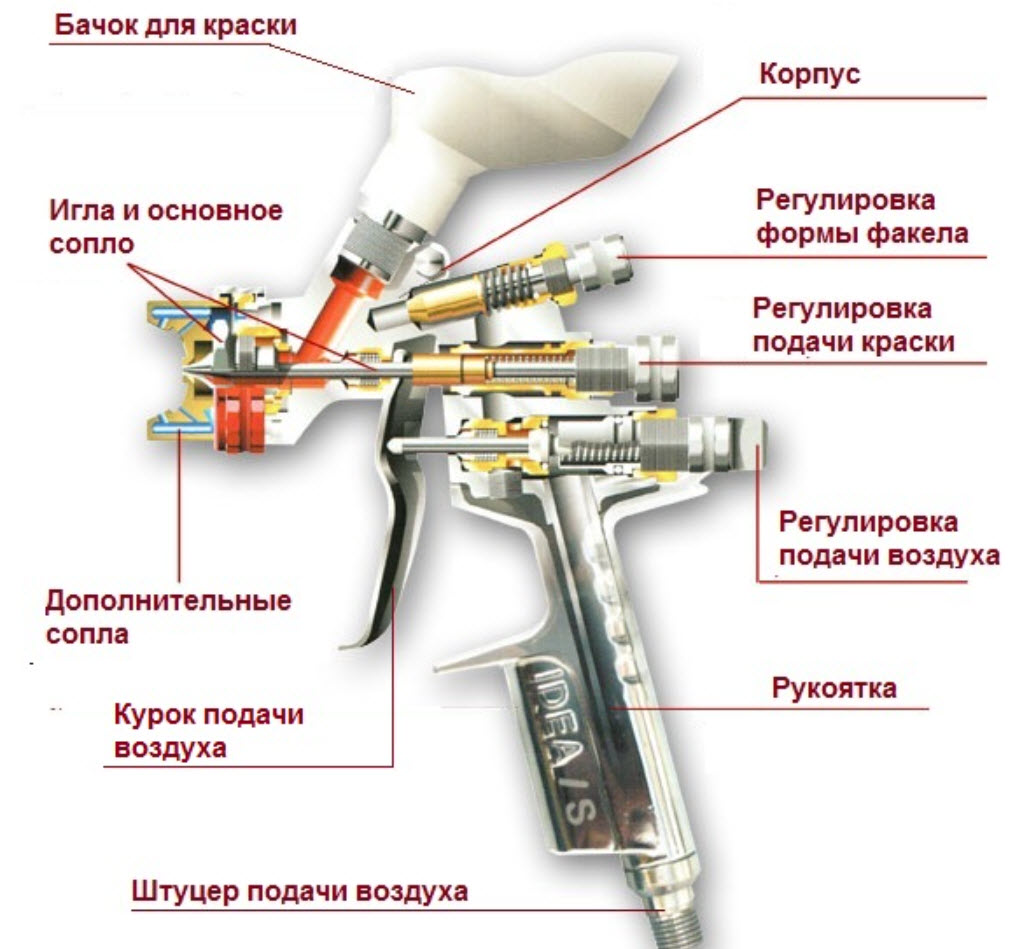
Which airbrush is better than HVLP or LVLP: differences and comparison of characteristics
Content
For professionals, this information is unlikely to be useful. They know everything about spray guns very well, work with them constantly and have long-established selection priorities. But for beginner car painters, as well as for those who are interested in mastering the technology of body painting, purchasing the necessary minimum equipment and saving on decorative refreshing of their own cars or helping friends, some information about spray guns will be useful.

What is a spray gun
When refinishing cars, all kinds of brushes and rollers have long ceased to be used. A can of paint under pressure will also not give an acceptable quality of coverage. To give the car the same look that it had when it left the factory, only an airbrush or spray gun, as it is called for having a pistol grip, can.

The vast majority of spray guns operate on the pneumatic principle. There are many differences between specific models, which is associated with the desire of manufacturers to approach perfection and facilitate the work of the painter.
That's right, part of the skill requirements of the craftsman can provide a good tool. But only at first, as you gain professionalism, the need for the best pistol is compensated by experience. In any case, a lot depends on the quality of the paint or varnish sprayer.
Principle of operation
All atomizers work in the same way. The air supplied from the compressor under significant overpressure passes through the gun handle, the control valve and enters the annular head. In its center there is a nozzle through which paint is supplied, picked up by a rarefaction of a fast air stream.

Once in the stream, the paint is sprayed into tiny drops, forming a fog that resembles a torch in shape. Settling on the surface to be painted, the paint creates a uniform layer, since small drops, not having time to dry, spread.
Ideally, the drops are so small and fluid that the surface forms a mirror finish without additional polishing. Although low quality guns, especially those under the control of a novice painter, will give a matte surface or a relief structure called shagreen instead of gloss. This can be corrected by sufficiently deep grinding and polishing, which the masters tend to avoid.
Устройство
The airbrush consists of channels and air supply regulators, paint and a body with a handle, the design includes:
- fitting for connecting a hose from an air compressor;
- air and paint supply regulators (primer, varnish);
- paint tank, can be top or bottom;
- spray head;
- a needle valve that synchronizes the supply of air and paint when the trigger is pressed;
- additional regulators, in particular, the size of the torch.


Everything in the design of the gun is subject to providing a number of spray properties, often contradicting each other:
- spray quality, exclusion of spitting;
- minimizing paint consumption;
- low pressure and compressor performance requirements;
- a wide range of permissible viscosities of the sprayed product;
- a well-defined torch of an adjustable shape with a minimum of spray outside it;
- application uniformity.
For this, a number of approaches have been developed to create spray guns for various purposes and price categories.
HVLP spray guns
HVLP (High Volume Low Pressure) means a large volume of air to pass through at a relatively low outlet pressure. Prior to the advent of this technology, spray guns operated with high air pressure near the nozzle, which gave good atomization, but completely unacceptable paint flow outside the torch.
With the advent of LVLP, where the design reduces the inlet 3 atmospheres to 0,7 at the outlet, losses have been significantly reduced, modern devices transfer up to 70% of the sprayed product to the right place.
But as the pressure decreases, the speed of the paint droplets also decreases. This forces you to keep the gun very close to the surface, about 15 centimeters.
Which causes some inconvenience when working in hard-to-reach places and reduces the speed of work. Yes, and the requirements for the compressor cannot be reduced, the flow rate is large, high-quality cleaning of significant air masses is needed.


Watch this video on YouTube
Painting guns category LVLP
Relatively new technology for the production of spray guns, characterized by reduced air consumption (Low Volume). This created significant difficulties in development, such requirements interfere with high-quality spray paint. But the inlet pressure is almost half as much, which means that the air flow decreases.
The ink transfer efficiency is higher due to careful design, so the distance to the surface can be increased up to 30 cm while maintaining the transfer coefficient at the same level, the ink is consumed as economically as HVLP.
What is better HVLP or LVLP
Undoubtedly, LVLP technology is newer, better, but more expensive. But this is offset by a number of advantages:
- accurate work at an increased distance;
- lower requirements for compressor and air purification device;
- uniform flame density;
- good speed;
- ease of work in hard-to-reach places;
- small formation of extraneous mist of paint;
- loyalty to inlet pressure fluctuations.
Unfortunately, this comes with increased complexity and cost. LVLP spray guns are many times more expensive at the same level than HVLP counterparts. We can say that the former will be easier to use by low-skilled personnel, and experienced craftsmen will cope with HVLP pistols.
Spray gun setting
It is necessary to start work with the selection of the mode on the test surface. You should only go to the working area when all the parameters of the gun are adjusted, otherwise you will have to wash everything off or grind it off, waiting for it to dry completely.
The viscosity of the paint is regulated by adding a solvent to it that is suitable specifically for this product, usually the materials are supplied in a complex. The paint should not reach the surface that has already dried up, but at the same time it should not create streaks.
The inlet pressure must be controlled by a separate pressure gauge, it must correspond to this model of the spray gun. All others depend on this parameter. It can also be set experimentally, achieving a uniform spray inside the spot with the paint supply and torch settings fully unscrewed.
The size of the torch can be reduced, but only in cases where it is really required. In all others, the decrease will only slow down the work. As well as the supply of paint, which makes sense to limit only with its low viscosity and tendency to drip. Sometimes it is necessary to adjust the feed even if the spot is unevenly filled or its regular elliptical shape is distorted.


Watch this video on YouTube
Do not get carried away with too high compressor pressure. This will dry out the paint and degrade the surface finish. The formation of streaks can be avoided by properly moving the torch along the part.